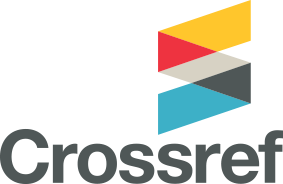COMPREHENSIVE METHODOLOGY FOR REAL-TIME PREPROCESSING OF UAV PHOTOREGISTRATION DATA
DOI:
https://doi.org/10.32689/maup.it.2024.3.1Keywords:
image preprocessing, unmanned aerial vehicles, statistical noise, morphological methods, image connected components, adaptive threshold algorithm, image matrix segmentationAbstract
The article analyzes the modern approaches used at the stage of pre-processing of unmanned aerial vehicle photo registration data by software algorithms. The development of the problem of efficient processing of large arrays of streaming data of photo registration systems of unmanned aerial vehicles in real time under conditions of limited computing resources is continued. The aim of the work is to build a holistic methodology for restoring and pre-segmenting the digital image matrix by software methods in accordance with the additive color scheme of the photo registration system without including methods for compensating for optical aberrations of the photo registration system and spatial filtering of input data. Methodology. An integrated approach to digital image processing is used, including the stages of pre-processing (PRIP), restoration and clustering of the image matrix with adaptation to the limitations of the computing resources of the hardware and software platform. Thresholding and morphological methods are used for processing, which provide preliminary segmentation and noise filtering, as well as classification and extraction of connected components in images. The scientific novelty is that an approach to the sequential application of erosion and dilatation procedures to remove noise, preserve the boundaries of important elements, and an algorithm for highlighting image boundaries due to the difference between the original image and the erosion result, depending on the color scheme of the image, has been developed. A three-stage approach for the color image segmentation algorithm is proposed, which includes detection of boundary gaps, thresholding, and region processing. It is proposed to limit the number of segments by introducing markers. Conclusions. The main attention was paid to the modeling and filtering of noise arising from the typical limitations of the photo registration system and the optical properties of the environment. The basic procedures of binary image preprocessing, such as dilatation, erosion, and edge detection, based on logical operators and correction primitives, were analyzed. The peculiarities of using thresholding methods of image preprocessing as a simple and effective approach for dividing an image into regions are presented. A scheme for implementing a color image processing algorithm with a global threshold is developed, which includes the stages of initial threshold estimation, correction, and re-checking until the specified accuracy is achieved. At the last stage, the methods of preliminary image segmentation using the watershed method are analyzed.
References
A UAV Detection Algorithm Based on an Artificial Neural Network / Zhang H., Cao C., Xu L., Gulliver T. A. IEEE Access. 2018. № 6. P. 24720–24728.
Bomfin R., Chafii M., Fettweis G. Performance assessment of orthogonal Chirp Division Multiplexing in MIMO space time coding. 2019 IEEE 2nd 5G World Forum (5GWF). 2019. DOI: https://doi.org/10.1109/5gwf.2019.8911635.
Collins W. Tracking Extremes in Exascale Simulations Utilizing Exascale Platforms. Exascale Systems. 2021. DOI: https://doi.org/10.2172/1769788.
Deep Sat V2: feature augmented convolutional neural nets for satellite image classification / Liu Q., Basu S., Ganguly S., Mukhopadhyay S., DiBiano R., Karki M., Nemani R. Remote Sensing Letters. 2019. № 11 (2). P. 156–165.
Dinc S., Parra L. A three-layer spatial-spectral hyperspectral image classification model using guided median filters. Proceedings of the 2021 ACM Southeast Conference. 2021. № 7. P. 122–129. DOI: https://doi.org/10.1145/3409334.3452045.
Feng L., Wang J. Research on image denoising algorithm based on improved wavelet threshold and non-local mean filtering. 2021 IEEE 6th International Conference on Signal and Image Processing (ICSIP). 2021. P. 493–497. DOI: https://doi.org/10.1109/icsip52628.2021.9688900.
Huang C., Nguyen M. X-Ray Enhancement Based on Component Attenuation, Contrast Adjustment, and Image Fusion. IEEE Transactions on Image Processing. 2019. № 28 (1). P. 127–141. DOI: 10.1109/tip.2018.2865637.
Huang C., Nguyen M. X-Ray Enhancement Based on Component Attenuation, Contrast Adjustment, and Image Fusion. IEEE Transactions on Image Processing. 2019. № 28 (1). P. 127–141. DOI: 10.1109/tip.2018.2865637.
Karim T., Tasneem T. Analytical Adjustment of Image Contrast. International Journal of Computer Applications. 2014. № 98 (20). P. 44–49. DOI: 10.5120/17303–7794.
Kim Y. W. Multi-GPU server design parameters selection based on empirical observation of HPL behavior. 2021 36th International Technical Conference on Circuits / Systems, Computers and Communications (ITC-CSCC). 2021. P. 1–4. DOI: https://doi.org/10.1109/itc-cscc52171.2021.9501469.
Lake B. M., Salakhutdinov R., Tenenbaum J. B. Human-level concept learning through probabilistic program induction. Science. 2015. № 350 (6266). P. 1332–1338.
Lee S., Kim T., Choi Y. Pseudo-RGB-based place recognition through thermal-to-RGB image translation. Journal of Korea Robotics Society. 2023. № 18 (1). P. 48–52. DOI: https://doi.org/10.7746/jkros.2023.18.1.048.
Purwono N., Syetiawan A. Application of UAV with fish-eye lenses camera for 3D surface model reconstruction application of UAV with fish-eye lenses camera for 3D Surface Model Reconstruction. Geoplanning: Journal of Geomatics and Planning. 2018. № 5 (1). P. 115. DOI: https://doi.org/10.14710/geoplanning.5.1.115–130.
Ren Y., Tang L. A nonconvex and nonsmooth anisotropic total variation model for image noise and blur removal. Multimedia Tools and Applications. 2019. № 79 (1–2). P. 1445–1473. DOI: 10.1007/s11042–019–08179–8.
Seelamantula C. S., Blu T. Image denoising in multiplicative noise. 2015 IEEE International Conference on Image Processing (ICIP). 2015. DOI: 10.1109/icip.2015.7351056.
Sone Y., Yamamoto S. Latest trends in 400 – and beyond 400-GBit / s ethernet standardization in IEEE 802.3. NTT Technical Review. 2021. № 19 (10). P. 61–66. DOI: https://doi.org/10.53829/ntr202110gls.
Suzuki Y., Ozaki T. Stacked Denoising Autoencoder-Based Deep Collaborative Filtering Using the Change of Similarity. 2017 31st International Conference on Advanced Information Networking and Applications Workshops (WAINA). 2017. DOI: 10.1109/waina.2017.72.
Vincent L., Heijmans H. Graph Morphology in Image Analysis. Mathematical Morphology in Image Processing. 2018. P. 170–203. DOI: 10.1201/9781482277234–6.
Wierzbicki D. Multi-camera Imaging System for UAV photogrammetry. Sensors. 2018. № 18 (8). P. 2433. DOI: https://doi.org/10.3390/s18082433.
Zghidi H., Świtoński A., Drążek G. Multispectralimage filtering using the mean shift algorithm. AIP Conference Proceedings. 2015. № 1648. P. 850057. DOI: https://doi.org/10.1063/1.4913112.
Zhang C., Liu W., Xing W. Color image enhancement based on local spatial homomorphic filtering and gradient domain variance guided image filtering. Journal of Electronic Imaging. 2018. № 27 (06). P. 1. DOI: 10.1117/1.jei.27.6.063026.





